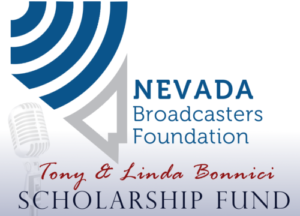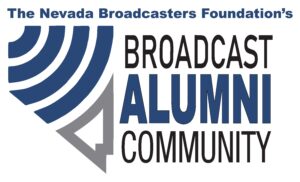We summarized the provisions of Section 230 of the Communications Decency Act on Monday, looking at the application of the law that the President has sought to change through the Executive Order released last week. Today, it’s time to look at what the Executive Order purports to do and what practical effects it might have on media companies, including broadcasters. As we noted in our first article, the reach of Section 230 is broad enough that any company with an online presence where content is created and posted by someone other than the site owner is protected by Section 230 – so that would include the online properties of almost every media company has.
The Executive Order has four distinct action items directed to different parts of the government. The first, which has perhaps received the most publicity in the broadcast world, is the President’s direction that the Department of Commerce, acting through its National Telecommunications and Information Administration (NTIA – the Executive Branch office principally responsible for telecommunications policy), file a petition for rulemaking at the FCC. This petition would ask that the FCC review Section 230 to determine if the protections afforded by the law are really as broad as they have been interpreted by the courts. The Executive Order suggests that the FCC should review whether the ability granted by the law for an online platform to curate content posted by others – the “Good Samaritan” provisions that we wrote about on Monday – could trigger a loss of protections from civil liability for third-party content if sites exercise the curation rights in a manner that is not deemed to be in “good faith”. The Executive Order directs this inquiry even though the protections for hosting online content are in a separate subsection of the law from the language granting the ability to curate content, and the protections from liability for third-party content contain no good faith language. The Order suggests that the FCC should find that there would not be “good faith” if the reasons given for the curation actions were “pretextual,” if there was no notice and right to be heard by the party whose content is curated, and if the curation is contrary to the service’s terms of use. The Order suggests that the FCC should adopt rules to clarify these issues.
There are plenty of debates over whether the FCC has the power to interpret Section 230. We won’t go into detail on those debates here, except to note that Section 230 does not suggest that the FCC is in any way to be involved in its interpretation (and the courts that have widely dealt with this section have never suggested that the FCC should get involved). This would also seem to get the FCC into judgments as to the content choices made by entities protected by the First Amendment, which the FCC itself stated last month that it does not do (see our article here). It is also worth noting that the FCC has also taken a very hands-off approach to regulation of online content, suggesting that it does not have the authority to regulate that content unless explicitly provided by Congress.
Even excluding these issues, this provision of the Executive Order is unlikely to have any real impact on media companies in the short-term, as it lays out a long process before any action would be taken. NTIA has to prepare and file the Petition for Rulemaking with the FCC. Then the FCC has to consider that petition – which it will normally put out for public comment even before initiating a formal proceeding. You can imagine that the FCC will likely receive a few comments when that petition is put out for public comment. Once the comments are received, the FCC will review them and, if they decide to move forward, it would either issue a Notice of Inquiry or a Notice of Proposed Rulemaking. If it is the former, the FCC will simply ask for more comments to determine whether it should take further action. If the FCC takes that route, the Notice of Inquiry would have to be followed by a Notice of Proposed Rulemaking seeking more comments before any rules could be adopted. If the FCC were to issue a Notice of Proposed Rulemaking, it would have to come up with proposed rules and provide a public comment period on those rules. That would likely be followed by some intense lobbying at the FCC before any final action could be taken. All told, even at an expedited pace, we are likely looking at a one- to two-year period before any FCC action may be taken – and even then, the action would likely be subject to court review. So FCC action is the least likely of the Executive Order’s activities to result in any substantive action in the short term.
The Order also asks the Federal Trade Commission to look at whether actions taken to curate content violate the terms of service of the online providers. While the FTC can act on individual cases of deceptive practices without a rulemaking process, the FTC itself enforces its findings through court actions, usually through consent decrees to avoid litigation. In most cases, it does not itself fine violators. Thus, any action on Section 230 would seemingly end up right back in the courts whose interpretations seem to have triggered the issues that led to the Executive Order. Moreover, the FTC’s authority to enforce prohibitions on unfair trade practices are focused on business practices that harm consumers – not questions of whether political speech is being edited in an improper way. On the FTC website, it recites its mission as:
Protecting consumers and competition by preventing anticompetitive, deceptive, and unfair business practices through law enforcement, advocacy, and education without unduly burdening legitimate business activity.
While the Executive Order may see the allegedly unfair or deceptive practices being an issue, whether these practices deal with the protection of consumers or competition is certainly an open question. Even so, most platforms have language in their terms of use that give them broad rights to determine what content can be posted on their site – and if they don’t now, you can bet that they will. If they reserve the right to edit anything at any time for any reason, there does not seem to be much in the way of deception to regulate. Nevertheless, all services with online platforms probably should review their terms of service to make sure that, when exercising any curation of the content on their site, they are acting in accordance with those terms.
The final two aspect of the Executive Order are perhaps where more immediate actions are possible. The Order asks that the Department of Justice review the application of the antitrust laws to these platforms, and work with State Attorneys General on such review. There has already been talk of antitrust review of the big online platforms from both sides of the political aisle, and this Order could hasten that review.
The most practical and direct way that the Order could affect online platforms is in its direction to all branches of the federal government to review their spending on advertising and marketing on these platforms and, within 30 days, to report to the Office of Management and Budget how much they are spending. That information is supposed to be reviewed by the Department of Justice to determine if spending should be curtailed if the platforms are determined to be “problematic vehicles for government speech due to viewpoint discrimination, deception to consumers, or other bad practices.” How that spending power is exercised without running into First Amendment issues is certainly a question. But, if there is likely to be any short-term impact from the Executive Order, this seems to be the area where the online platforms may initially see consequences from the President’s actions.
We have already seen at least one lawsuit filed claiming that the Executive Order is an unconstitutional action in violation of, among other things, the First Amendment. We are bound to see more litigation over any of the actions outlined above that are covered by the Order. Nevertheless, the Order sends a message to online platforms that their performance is being scrutinized by this administration – but that may be all that we see in the short term other than perhaps some redirection of the advertising spending of government agencies. Whether in the long term anything more than that warning results from the Executive Order remains to be seen, but any action certainly will need to overcome numerous legal hurdles.
Courtesy Broadcast Law Blog


